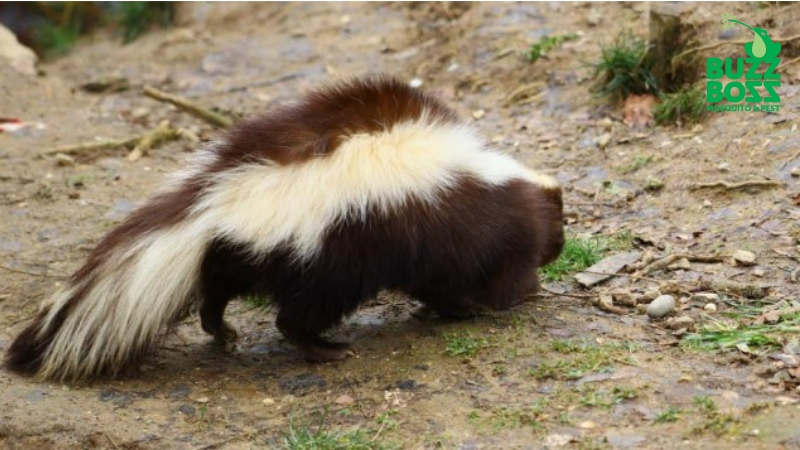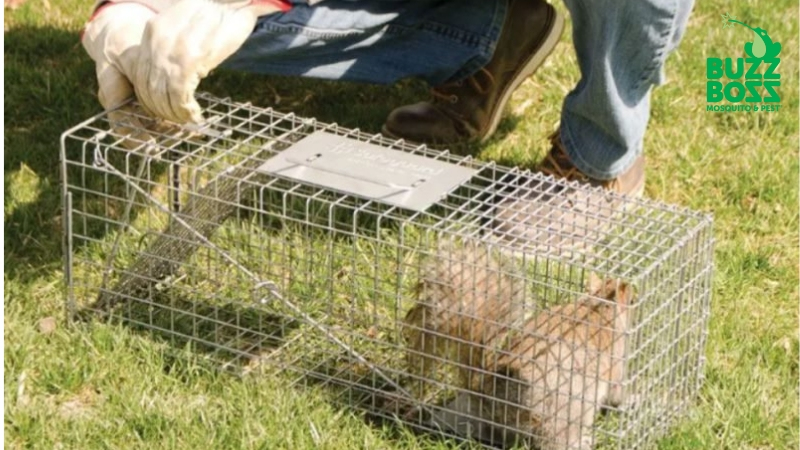What is Humane Wildlife Trapping? How Does It Work?
Reading time: 5 minutesAs the warm seasons bring us closer to nature, they also invite some of the wildest neighbours into our yards. Skunks, raccoons, and squirrels are often a cause for concern, especially when they decide to make your space theirs.
Recently, more animals have started making their homes in cities and towns. This trend is driven by several factors, such as the availability of food (such as garbage, scraps, and leftovers) which serves as a major attraction. Cities also provide shelter and warmth, making them irresistible for wildlife.
Take it from us, you don’t want to end up in a battle of wits with wild animals. So without further ado, let’s get into the ethical strategies for managing these interactions. We want to ensure that you and the wildlife can coexist peacefully and safely.

Ethical Foundations of Humane Wildlife Trapping
Humane wildlife trapping is all about ethical treatment and respect for animal welfare while managing wildlife interactions. This approach involves strategies and devices specifically designed to capture animals without causing them harm or undue stress.
Unlike conventional trapping methods that may employ lethal force or cause significant distress to animals, humane trapping uses techniques that ensure the safety and well-being of the animal during the capture and relocation process.
The objective is to minimize pain and suffering, ensuring that any captured animals are not left in traps for extended periods and using the most species-appropriate methods. The welfare of the animals fosters a balanced ecosystem, which is an important principle of humane wildlife trapping.
How Humane Wildlife Trapping Works
Managing wildlife encounters humanely requires not just care and respect for nature, but also a well-thought-out strategy. Here’s how we handle wildlife issues on your property effectively and ethically:
1. Identify the Wildlife
The first step is to accurately identify the animal causing the disturbance. Each species has unique behaviours and requirements that significantly influence the choice of trapping methods and legal considerations.
For instance, the approach to trapping a raccoon might differ from that for a squirrel or skunk due to their different behaviours and dietary needs. Knowing the species helps us select the right type of trap and ensures that we adhere to specific legal guidelines.
2. Understanding Local Laws and Regulations
It’s essential to familiarize yourself with the local wildlife laws. These regulations are in place to protect both the wildlife and the community. They specify which species are protected in your province, which can legally be trapped, and the methods permitted.
Complying with these laws not only prevents legal repercussions but also ensures the safety and humane treatment of the animals involved. Always check for any required permits or restrictions before setting a trap.
In Alberta and British Columbia, additional regulations may cover migratory birds and specific bans on trapping certain predatory animals.
3. Choosing and Setting Humane Traps
Live cage traps are commonly used for humane trapping because they’re designed to capture animals without causing harm. When setting a trap, consider the animal’s behaviour and natural habitat.
We place the trap in an area where the animal frequently travels or near a food source. For baiting, we choose food that’s attractive to the target species but position it so that the animal is fully inside the trap before it springs, minimizing the chance of injury.
In Alberta, for instance, regulations govern the trapping of raccoons, coyotes, and certain migratory birds, reflecting the province's diverse ecosystems
4. Monitoring and Handling Trapped Animals
Once the trap is set, regular monitoring is crucial. We ask homeowners to check the trap every 24 hours to ensure that any captured animals do not suffer from prolonged confinement. This frequent checking also helps in promptly releasing any non-target species that might have been accidentally trapped.
When the animal is trapped, we carefully handle and transport it to minimize stress and the risk of injury. Our technicians then relocate the animal to a suitable habitat far enough from residential areas to discourage it from returning. We want to ensure that the animal ends up in a place where it can thrive.
5. Post-Trapping Procedures
After the animal is safely relocated, it’s all about taking proactive measures to prevent future wildlife problems. This involves a thorough assessment and repair of any potential entry points where animals could access your property.
We provide recommendations for you to seal holes or gaps in exterior walls, secure loose vent covers, or cap chimneys to deny entry. You can also consider installing motion-sensitive lighting or fencing areas that frequently attract wildlife.

Addressing the Root Cause and Preventive Measures
To prevent wildlife issues, it's important to understand the underlying causes that attract animals to your property in the first place. Most of the time, wildlife encounters occur due to easy access to food, water, or shelter.
Here are some proactive steps you can take to make your property less inviting:
- Secure Food Sources. Animals such as raccoons and squirrels are attracted to easy meals from unsecured garbage bins or pet food left out overnight. Make sure all food sources are securely stored, and use garbage bins with locking lids to prevent access. Also, regularly clean up any fallen fruits, nuts, and food remnants from outdoor dining areas.
- Remove Water Sources. No, we’re not asking you to get rid of your pool; just standing water which can attract various wildlife species. Empty water containers, fix leaky taps and ensure proper drainage in your yard to remove potential drinking sources.
- Make Your Property Less Inviting. Prune trees and shrubs away from your home to prevent easy access to roofs or balconies. Seal off potential entry points like gaps in roof tiles, vents, eaves, and holes in exterior walls to keep animals from entering your home or building nests.
Furthermore, keep your yard clean and well-maintained. Remove debris and clutter, which can provide shelter for small animals. Lastly, consider using gravel or fencing around the base of your home to deter burrowing.
Wildlife Trapping and Removal Done Right
If you're facing challenges with wildlife on your property, don't tackle them alone. Buzz Buss is ready to assist with effective, humane wildlife management services tailored to your specific needs.
At Buzz Boss, we offer our expert skunk, raccoon, and squirrel trapping and removal services to residents in Calgary, Edmonton, Red Deer, Regina, Saskatoon, Winnipeg, and Okanagan.
Contact us today for an estimate, and let’s help you maintain a harmonious environment for both you and the local wildlife.

